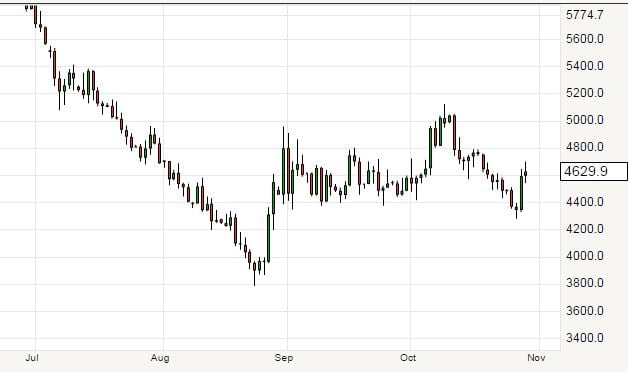Canadian Dollar: USDCAD Forecast @ 1.37 by TD Securities
- Written by: Gary Howes
- "So if history is to be repeated, there should be a USD CAD topside bias," - Jeremy Stretch at CIBC.

Oil prices matter for Canada. Official data from the EIA shows that the United States buys around 3.5 million barrels of oil a day from Canada.
At a price of 50 USD a barrel that 100 million USD worth of currency flows made a day. Transactions amounting to 175M USD to CAD will have a significant bearing on exchange rate moves as a result.
The USD to CAD flow is therefore a major contributor to the Canadian dollar's strenght; when oil prices fall we inevitably see less demand for the CAD and the exchange rate falls.
The outlook for the Canadian dollar is therefore highly dependent on the oil price.
Near-term direction in the CAD has been particularly responsive.
Oil price rose sharply on the 28th of October taking the WTI price from below 44 USD a barrel to above 46 USD.
The pound sterling to Canadian dollar promptly fell on the declines - the GBP to CAD conversion saw a high of 2.0326 ahead of the spike in oil price and fell to a low of 2.0062 after the fact.
The USD to CAD conversion meanwhile fell from 1.3280 down to 1.3089.
The dynamic remains intact at the time of writing.
Be aware that the current oil-inspired Canadian dollar relief rally may be false.
"In terms of the oil rebound, while the EIA oil inventory data may have been marginally less bearish than assumed, it could have been a month-end impact similar to that in August when prices had retreated substantially during the month, only to bounce into month end amidst real money inflows or the covering of shorts," says Jeremy Stretch with CIBC.
Stretch believes that if we are witnessing something similar we should remember that the price bounce reversed into September.
"So if history is to be repeated, there should be a USD CAD topside bias," says Stretch.
The good news for those looking for a stronger Canadian dollar is that North American oil prices appear to have stabilised.
Above: WTI prices have bottomed above 42 USD a barrel.
The bottom was reached in August and subsequent trade appears to have placed a floor to the declines.
The consolidation in the oil price also co-incides with a consolidation in the major Canadian dollar pairings.
Thus, the worst for the CAD is most likely behind us.
That said, oil is not the only driver for the Canadian currency which will also feel pressure from interest rate moves at global central banks.
The US Fed has indicated it will look to start raising rates as early as December, "looking forward, our year-end target of 1.33 remains intact for USDCAD," says Ned Rumpeltin at TD Securities, "in the wake of yesterday’s FOMC result, we do see some upside risks to that forecast."
Strategically, TD Securities prefer to play USDCAD from the long side overall even if the Fed does not hike in December as the CAD will need to remain weak to facilitate the structural realignment in the domestic economy.
"Currently, we have USDCAD forecast to reach a peak of 1.37 in the early part of next year and we maintain that forecast for now," says the Canadian bank.





